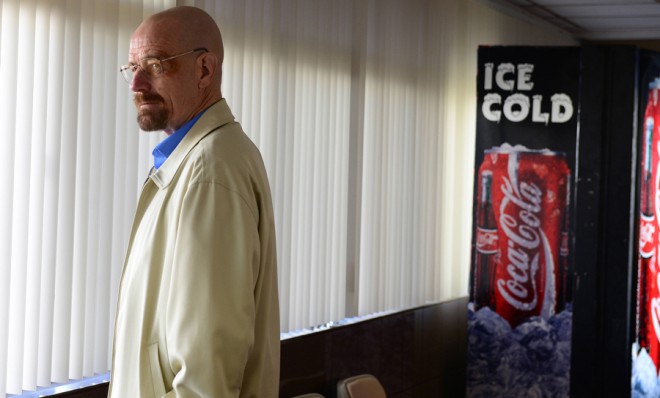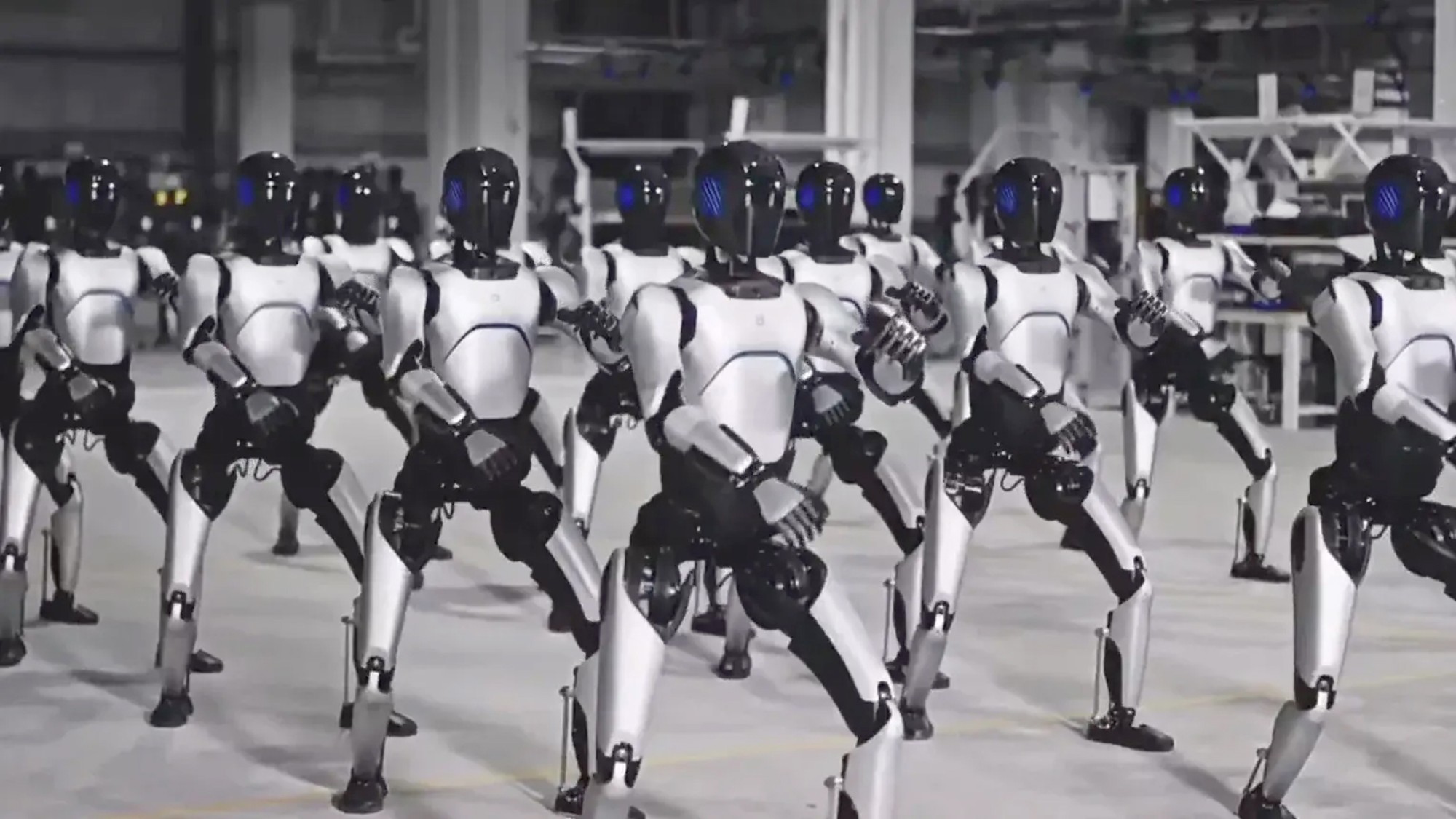Breaking Bad recap: The ticking time bomb
Sunday's "To'Hajiilee" proves once again that Breaking Bad is the most suspenseful show on television


In a now-legendary 12-hour interview with Francois Truffaut, Alfred Hitchcock explained the pivotal difference between surprising your audience and keeping them in suspense. "We are now having a very innocent chat," said Hitchcock. "Let us suppose that there is a bomb underneath the table between us. Nothing happens, and then all of a sudden, 'Boom!' There is an explosion. The public is surprised, but prior to this surprise, it has seen an absolutely ordinary scene of no special consequence."
"Now, let us take a suspense situation," Hitchcock continued. "The bomb is underneath the table and the public knows it, probably because they have seen the anarchist place it there. The public is aware that the bomb is going to explode at one o'clock and there is a clock in the decor. The public can see that it is a quarter to one. In these conditions this innocuous conversation becomes fascinating because the public is participating in the scene. The audience is longing to warn the characters on the screen: 'You shouldn't be talking about such trivial matters. There's a bomb beneath you and it's about to explode!'"
"In the first case we have given the public 15 seconds of of surprise at the moment of the explosion. In the second we have provided them with 15 minutes of suspense. The conclusion is that whenever possible the audience must be informed."
The Week
Escape your echo chamber. Get the facts behind the news, plus analysis from multiple perspectives.

Sign up for The Week's Free Newsletters
From our morning news briefing to a weekly Good News Newsletter, get the best of The Week delivered directly to your inbox.
From our morning news briefing to a weekly Good News Newsletter, get the best of The Week delivered directly to your inbox.
Breaking Bad's final run of episodes, which began with last summer's "Live Free or Die," have been a demonstration of Hitchcock's principle writ large. Watching the climax of tonight's "To'Hajiilee," we know something that none of the characters in the scene know: Walter White has to survive. He has to get away because he has to grow a beard and have his solitary 52nd birthday at a Denny's. He has to buy a massive gun and drive it back to his empty, ripped-up house, where he he has to retrieve the ricin he stashed away in an electrical outlet.
Imagine, hypothetically, how differently the final scenes of "To'Hajiilee" would play if we didn't have that information. Director Michelle MacLaren draws the scene leading up to the episode's inevitable conclusion to agonizing lengths. Hank relishes every second of Walt's arrest — cuffing him, reading him his Miranda rights, putting him in the back of the SUV, calling Marie to celebrate. If we didn't know where this story was going, the scene would be agonizing because it might mean the end of Walter White — who is, for all his faults, our protagonist, and someone it's enormously surreal to see defeated.
But because we know Walt can't be arrested here, the scene is agonizing for an entirely different reason. Walt has to get away, and that almost certainly means the death of someone, if not everyone, around him.
This is a philosophy that sets Breaking Bad apart from every other major prestige drama on television. Game of Thrones derives much of its power from surprise — the knowledge that none of its characters are safe, which fueled water-cooler moments like the death of Ned Stark or last season's Red Wedding. Mad Men showrunner Matt Weiner guards against spoilers so zealously that not even critics are allowed to see episodes before they air. But Breaking Bad went out of its way to spoil the climax to its story at the outset of the fifth season, at least 12 episodes before the story caught up with it. That's suspense.
A free daily email with the biggest news stories of the day – and the best features from TheWeek.com
It's also, in retrospect, the storytelling device that marked Breaking Bad's evolution from a tragic story to a tragedy in the most classic sense of the word. The last time Breaking Bad used extensive cold opens was in its second season — but while the device was the same, the effect was completely different. The black-and-white shots of the teddy bear in the pool offered a mystery that was virtually impossible to solve; we didn't know that Jane's father was a flight controller, or that there was a plane crash, until the final episode of the season. Breaking Bad even used the flash-forwards to misdirect the audience from what was really happening; the mysterious covered bodies in the White family's driveway, which drew so much feverish speculation at the time, turned out to be two faceless and nameless plane crash victims wholly unconnected with the events of the series proper.
But if the cold opens in Breaking Bad's second season were designed to obscure the eventual ending, the cold opens in Breaking Bad's fifth season were designed to reveal it. The power of tragedy, like the power of suspense, comes with the knowledge of the inevitable ending — a knowledge that the story's characters don't share.
Of course, we're still not quite at that ending yet. The cat-and-mouse game between Walt and Hank, with each man simultaneously playing "cat" and "mouse," has come to an end with Hank on top (with a major assists from Jesse). Just as Walt defeated Gus by recognizing that his opponent's key weakness was his hatred for Tio Salamanca, Hank and Jesse defeated Walt by recognizing that his key weakness was his money. Unfortunately, Walt had an extra wild card: Todd's Uncle Jack and the rest of his Nazi buddies, who show up and start firing on Hank and Steve Gomez.
The episode ends before anyone has dropped, but it's safe to say that will change before anyone puts down their arms in next week's episode. If I had to predict — though my predictions have certainly been wrong before — I'd wager that Gomez will definitely be killed and Hank will probably be killed. Walt and Jesse, who are clearly the answer to Lydia's branding problem, will be spared to serve as the top-tier meth cooks her European contacts have been demanding. Their reward, presumably, will be not getting killed and buried in an unmarked grave in the desert by the Nazi gang.
"The apprehension of the bomb is more powerful than the feelings of sympathy or dislike for the characters involved," Hitchcock explained. But Breaking Bad has gone one step further by making Walter the "ticking time bomb" in this story (as Mike once aptly and memorably described him). With just three episodes left, we're still waiting to see him go all the way off — but we know where he'll end up when he does.
Read more Breaking Bad recaps:
- Breaking Bad recap: 'Rabid Dog'
- Breaking Bad recap: The bogus, manipulative 'confessions' of Walter White
- Breaking Bad recap: Buried money, buried secrets, and buried motivations
- Breaking Bad premiere recap: "Blood Money"
Scott Meslow is the entertainment editor for TheWeek.com. He has written about film and television at publications including The Atlantic, POLITICO Magazine, and Vulture.
-
 Pipe bombs: The end of a conspiracy theory?
Pipe bombs: The end of a conspiracy theory?Feature Despite Bongino and Bondi’s attempt at truth-telling, the MAGAverse is still convinced the Deep State is responsible
-
 The robot revolution
The robot revolutionFeature Advances in tech and AI are producing android machine workers. What will that mean for humans?
-
 Health: Will Kennedy dismantle U.S. immunization policy?
Health: Will Kennedy dismantle U.S. immunization policy?Feature ‘America’s vaccine playbook is being rewritten by people who don’t believe in them’
